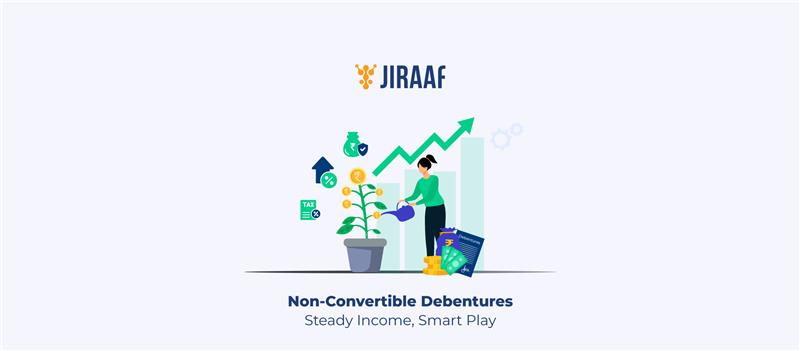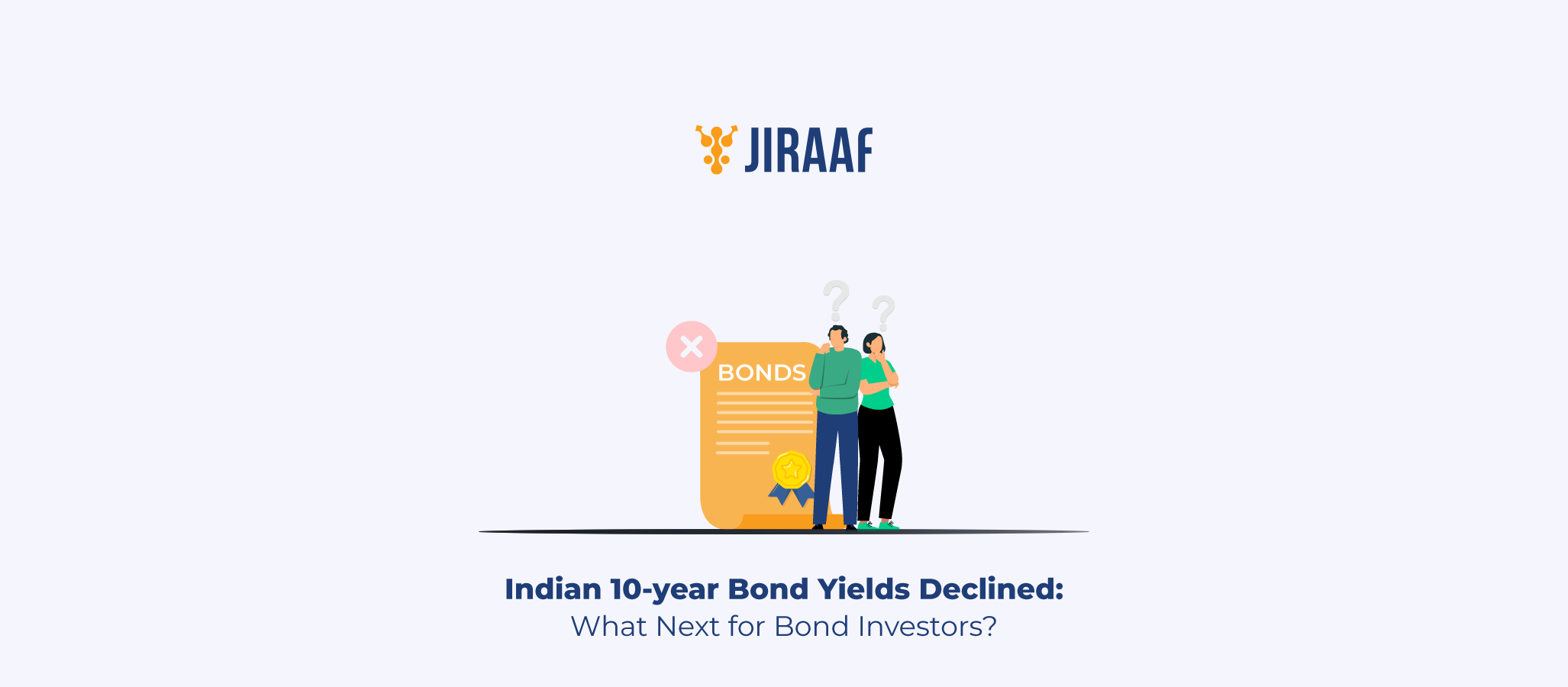Ever wondered why two bonds with the same maturity are offering different returns? You might have come across the term ‘credit spread’ if you ever planned to dip your toes into fixed-income investments. If it sounded complex to you, we are here to break it down – credit spreads are, in fact, easy to understand and easy to calculate. They are a powerful indicator that can help you gauge risk and spot opportunities in the debt investment universe.
This post will give a no-nonsense look at credit spreads, starting from the definition and calculation, the impact it can have on your investments, how you can use it to make wise investment decisions, and more. Let’s dig in.
What Are Credit Spreads in Bonds?
Credit spread, also known as yield spread, is the difference in the yields between two bonds of the same maturity but with different credit ratings. Typically, it’s the difference between the yield of a corporate bond and that of a government bond with the same maturity to identify the risk premium the corporate bond investment offers.
G-secs have sovereign backing and are thus considered the safest debt instruments in the country because they have almost no default risk.
The bond credit spread represents the additional compensation investors demand for the extra risk associated with a non-government issuer, as the default risk here is higher. The extent of default risk will depend on the issuer’s creditworthiness and industry.
In the Indian context, credit spread refers to the difference between the yields of government bonds issued by the RBI and bonds issued by organizations such as corporations, NBFCs, municipal corporations, etc.
The credit spread is measured in basis points (bps). 1% is equal to 100 bps.
How to Calculate Credit Spreads for Bonds?
Calculating credit spread is easy. Use the formula below to calculate the spread before investing in nongovernment bonds.
Credit Spread = Corporate Bond Yield – Government Bond Yield / Benchmark Yield
Example: You are evaluating an investment in company X’s 10-year bonds. The bonds have a AAA rating and a current yield of 8.5%. The 10-year central bonds have a yield of 6.5%. The credit spread here would be 2% or 200 bps.
Credit Spread = 8.5% – 6.5% = 2% i.e. 200 bps
The 200 bps spread in the risk premium you demand for investing in a debt instrument of a company with a higher default risk compared to India.
In the Indian context, the 200 bps spread is a narrow credit spread, signifying that the borrower is an established organization with an established record of on-time repayments and no defaults. The bond issue’s AAA rating also underlines this fact.
Here are the key points you should consider when calculating and interpreting credit spreads:
- The bonds’ maturity must be the same for an accurate spread comparison
- Credit spreads are measured in basis points (bps), where one basis point equals 0.01%.
- A narrower credit spread indicates lower perceived risk and vice versa.
Let’s unpack the signalling impact of the credit spread so that you can read the economic and financial implications of spreads with confidence.
Why Credit Spreads Matter to Investors
Credit spreads directly reflect a bond’s perceived credit risk. A wider spread indicates higher risk and, thus, potentially higher returns, while a narrower spread signals lower risk.
It is important to note that credit spreads are calculated on yields and not coupon rates and, thus, are subject to change with changes in economic conditions and interest rates in the country.
Therefore, the credit spread for the debt asset you have invested can see significant changes if the bond yields start falling with a decrease in interest rates or start rising with the tightening of interest rates in the economy.
Monitoring credit spread change can help you ascertain the following:
- The risk-return trade-off of different bonds. A wider spread would mean more risk and, thus, a higher return to price in the risk.
- Market-wide credit spread expansion would mean investors are prepping for market uncertainty. Thus, they are unsure about the issuers’ ability to repay. They are pricing the increased risk, resulting in widening spreads.
- Identifying upcoming volatile markets can help you make better investment decisions for your portfolio’s debt and equity portions.
- Identifying periods of market stability and growth, signalled by narrowing spreads, will help you boost your portfolio with high-yield debt before the start of the rate-cut regime.
Humble and straightforward credit spreads can help you gauge the market’s pulse before indicators like the equities market show signs of volatility or gains. This is why credit spreads are forward indicators that help guide your portfolio allocation decisions.
Key Factors That Influence Credit Spreads
Credit spreads are derived from bond yields, where bond yields change with changes in interest rates and the issuer’s creditworthiness. Here are the key factors that influence the credit spreads:
Economic Conditions
Macroeconomic stability, GDP growth, and overall market confidence play a significant role. Credit spreads tend to lower during periods of macroeconomic stability as investors have greater confidence in companies’ ability to meet their debt obligations.
Conversely, credit spreads widen during economic slowdowns, recessions, or rising inflation as uncertainty about corporate earnings increases the probability of a default.
Market Sentiment
The market sentiment dictates investors’ risk perception. A stable economic scenario with controlled inflation, steady growth, and strong economic activity will increase investor confidence, inversely impacting their risk appetite. This will translate to a narrower credit spread, as investors are willing to buy corporate bonds at lower yields.
While market stability will narrow spreads, market volatility will lead to investors demanding a higher risk premium, widening credit spreads.
Issuer Creditworthiness & Ratings
Financial health and creditworthiness are a debt instrument’s primary determinants of credit spread. This is because high-rated safe companies such as PSUs or blue-chip companies can raise debt at a relatively lower rate compared to riskier issuers such as start-ups or SMEs. The risk premium for riskier companies will be higher, widening the spread.
Liquidity and Market Depth
Bonds with a strong secondary market tend to have narrower spreads as they can be easily liquidated on exchanges such as BSE or NSE. Conversely, illiquid bonds have a higher spread to compensate for the difficulty of exiting the position.
How Credit Spreads Differ by Bond Type
Credit spreads are not set in stone. They are sensitive to changes in yields and differ for different types of bonds. Here is how credit spreads differ for bond types:
Government Bonds vs. Corporate Bonds
Government Bonds
G-secs or central government bonds are the safest debt instruments in the country as they come with sovereign backing. Government bonds do not have a credit spread. This is because credit spreads measure the risk premium, and the risk associated with g-secs is almost nil.
In fact, the 10-year benchmark g-sec yield is often called the risk-free rate in the economy.
Corporate Bonds
Corporate bonds have higher yields than government bonds to price in the risk that the investors are taking—the risk premium factors in the higher default risk that corporate bond investors face compared to G-sec participants.
Municipal Bonds
Municipal bonds are issued by local governing bodies to fund public infrastructure projects such as building metros, water treatment plans, sewage treatment plants, etc. They have gained popularity recently, especially since the launch of the India Nifty India Municipal Bond Index. Municipal bonds have a higher spread than G-sec as they do not come with sovereign backing but can have a lower credit spread than some corporate bonds. This speaks for their relatively safe investment profile.
Emerging Market Debt
Emerging market debt refers to debt issued by developing economies such as India. The benchmark interest rates are typically high in emerging economies, and thus, debt issued will be at a higher rate compared to developed countries such as the US. The credit spreads will also be higher in emerging economies.
Using Credit Spreads to Gauge Market Sentiment
Credit spreads are forward indicators that help read into the market sentiment. Here is how it works:
Widening Credit Spread
An expanding spread signals risk aversion among investors. This could be a result of increasing market volatility, economic uncertainty, or even sector-specific weakness.
An economy-wide credit spread widening would suggest upcoming economic uncertainty, whereas sector-specific spread changes would signal investor caution for that segment.
Narrowing Spread
Narrowing spreads would indicate improving investor confidence and macroeconomic stability or a dire scenario in which investors are fleeing toward safe asset classes such as G-secs.
Credit spreads used in isolation can be misleading. You should combine the credit spread data with other indicators like GDP rates, inflation forecasts, etc, to get a clear market picture. Here are some tips that you can use to interpret spreads.
Tips to Interpret Credit Spreads Effectively
- Compare apples-to-apples: Always compare debt instruments of the same term. In the absence of reference for the same term instrument, use the closest comparable to get a reliable spread.
- Keep a close watch on trends: Sudden spread changes may signal macroeconomic headwinds or changes in the investor’s risk perception.
- Consider macroeconomic indicators: Interpret changes in spreads with changes in macroeconomic indicators such as inflation rates, GDP forecasts, interest rates, etc.
- Go beyond credit ratings: While knowing the credit rating of debt instruments is essential, pay close attention to spread changes. The spread changes can indicate changes in the issuer’s financial situation faster. There have been cases in the Indian debt market where the credit ratings of corporate bonds have fallen from AAA to D, which symbolizes default, and the widening credit spread priced in the risk before the change in the credit ratings could.
- Monitor sector-specific spreads: Sectors-specific risks can spur changes in spreads. Therefore, it is advisable to closely monitor volatile sectors such as NBFCs or real estate, etc.
Credit Spreads as a Market Barometer
Credit spreads are an underrated economic indicator. A strong understanding of credit spreads can help you better decode the bond market movement and the macroeconomic developments in the economy. While many economic concepts, such as inflation and interest rates, may seem complicated, learning their implied implications in relation to credit spread can aid in making informed investment decisions.
Discover fixed income investments with Jiraaf, a SEBI registered online bonds platform that educates and brings access to a wide array of bonds. Sign up today to explore diversified fixed income investment opportunities to support your goal-based wealth creation journey. Start investing!



